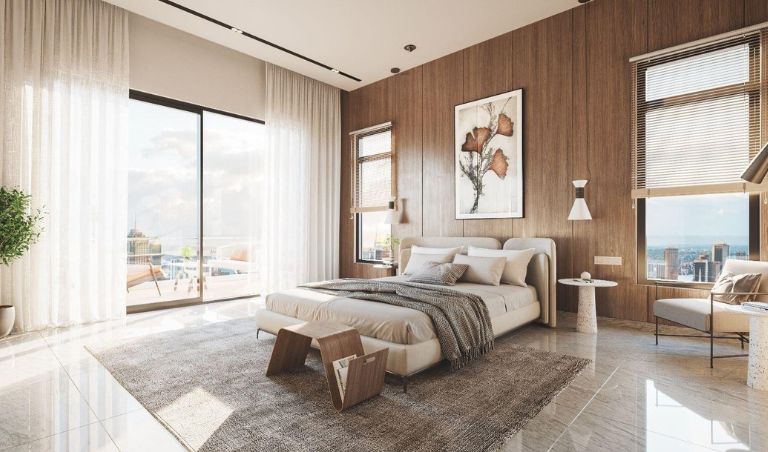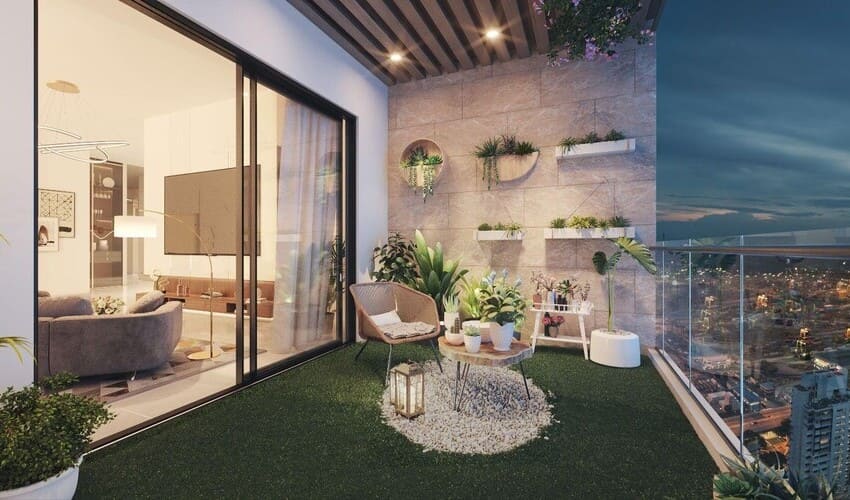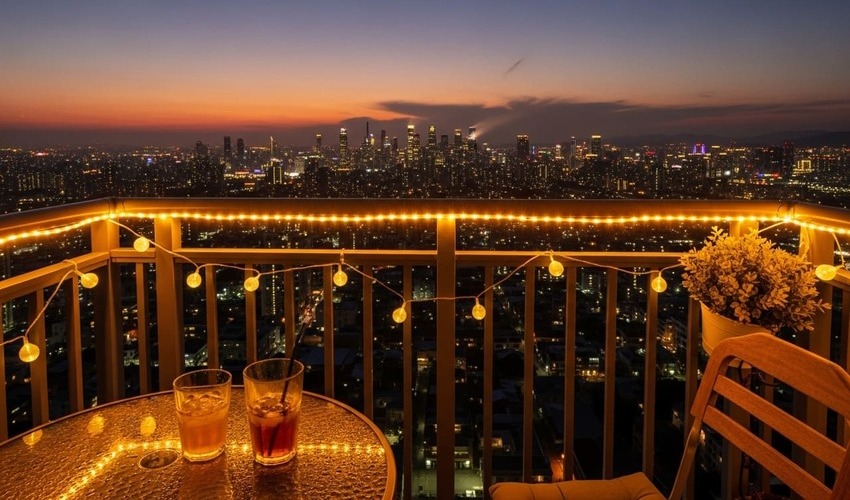
Corner flats—located at the ends of apartment corridors—offer superior ventilation, sunlight, views, and privacy; but they may cost more and pose challenges in thermal insulation and soundproofing. Choosing wisely means knowing the pros, cons, Vastu implications, and buyer profile suited for these unique layouts.
Ever wondered if a corner flat is really worth the extra price tag? These end-of-corridor units are trending—and for good reasons. Bright, airy, and secluded, they’re ideal for some. But, before you buy, it’s essential to understand their pros, cons, and how they stack up against middle flats. Here’s your detailed, human-ready guide to guide your choice.
What Is a Corner Flat? Meaning and Layout Explained
A corner flat—also known as an end unit—is situated at the edge of a building floor, adjoining only one neighbor instead of two. This gives it unique L-shaped floor plans with windows on two sides. In contrast, a middle flat is sandwiched between neighbors and typically has windows in only one direction. That means corner flats benefit from naturally superior light and airflow.
Top 5 Benefits of Living in a Corner Flat

- Better Sunlight & Ventilation
Two or more walls with windows bring in max natural light and airflow—keeping interiors fresh and mold-free. - More Privacy & Fewer Noisy Neighbors
Only one shared wall means you’ll hear—and be heard—less by neighbors. Plus, fewer passersby near your door. - Expanded Views & Extra Space
Enjoy panoramic views and sometimes bonus balcony or patio spaces—often not possible in middle flats. - Distinct Layout & Floor Plan Options
Corner units often have creative layouts with unique shapes and designated storage or window zones—great for functional living. - Exclusive Address & Resale Appeal
Being less common, corner flats are often perceived as premium—boosting both lifestyle cache and resale value.
Corner Flat vs Middle Flat: Which One Is Right for You?
| Feature | Corner Flat | Middle Flat |
| Sunlight | Excellent – windows on two sides | Limited – typically one side only |
| Ventilation | Superior airflow | Moderate, but easier to climate-control |
| Noise | Less neighboring noise | Share walls both sides – more noise |
| Thermal Efficiency | Less efficient—heat gain/loss through more windows | Often better insulated |
| Privacy | Higher – fewer shared walls | Lower – access from both sides |
| Cost | Typically higher pricing | Generally more affordable |
If you value light, fresh air, and privacy—and don’t mind slightly higher costs—corner flats shine. But if energy efficiency, consistent temperature control, and reduced cooling/heating costs are priorities, a middle flat might be more practical.
Vastu for Corner Flats: What You Need to Know
Vastu Shastra advises harmony of energies in home layouts. For corner flats, pay extra attention to directional flow:
- Preferred Corners: Northeast is considered auspicious—bring in positivity when kept clean and clutter-free.
- Avoiding Doshas: Southeast or extended corners may channel too much fire energy; Vastu partition strips or energy balancers can help correct energy imbalance.
- Remedies: Use light, soothing colors; place wind chimes or crystals for balanced energy, especially in northwest zones.
Common Drawbacks of Corner Flats and How to Overcome Them

- Higher Energy Bills
Lots of windows can make summers hotter and winters cooler. Fix it with insulated double-glazed windows and smart curtains. - Noise from Outdoors
With more exposure, street or traffic noise may seep in. Soundproof windows or acoustic treatment can help. - Increased Maintenance
More facade means more cleaning and upkeep. Budget accordingly and explore maintenance packages. - Layout Oddities
The L-shaped plan may include dead-zone corners. Smart furnishing and built-in storage solutions can maximize use.
Are Corner Flats More Expensive? Pricing and Market Trends
Yes, corner flats typically command 5–15% premium over middle units due to their enhanced features and scarcity. This varies by city and development. They are seen as highly marketable, especially for lifestyle-conscious or premium-seeking buyers.
Who Should Buy a Corner Flat? Ideal Buyers & Use Cases
- Individuals working from home who value peace and light
- Families needing cross-ventilation and natural lighting
- View seekers keen on expansive surroundings
- Resale-focused buyers—corner flats often fetch better ROIs
- Buyers practicing Vastu to harness dual-directional energy
Tips to Choose the Best Corner Flat in an Apartment Complex
- Check Orientation – Northeast or east-facing units are more desirable for light and energy.
- Window Quality Matters – Invest in double-glazed, thermally efficient fenestration.
- Noise Levels – Visit at different times to assess external noise impact.
- Floor Level – Higher floors boost privacy and view while reducing street noise.
- Common Area Access – Ensure ease of access to lift, parking, and corridor.
- Analyze Resale Options – Even if paying premium, corner flats often attract future buyers faster.
Corner Flat vs Middle Flat: Quick Comparison
Corner flats offer superior ventilation, light, privacy, and views—but may bring higher costs and maintenance. Middle flats deliver thermal efficiency and quieter environments at better value. Decide based on your lifestyle needs and long-term goals.
FAQ’s
1. What is the difference between a corner flat and a middle flat?
A corner flat is positioned at the end of a corridor with windows on two sides, offering more sunlight, cross‑ventilation, and privacy. Middle flats are sandwiched between neighbors with single‑side ventilation. Both types fit different lifestyles—choose based on your needs for scenery, airflow, or thermal efficiency.
2. Are corner flats worth the higher price tag?
Often, yes. Corner flats typically command a premium due to benefits like increased natural light, better views, and added exclusivity. However, they may require higher maintenance and have energy efficiency trade‑offs. If you value brightness, airflow, and resale attractiveness, the extra cost can be justified.
3. Is a corner flat better for natural light and ventilation?
With windows on two or more facades, corner flats allow abundant daylight and superior air circulation, reducing reliance on artificial lighting and fans. This design improves indoor comfort, reduces mold, and enhances energy saving—ideal for buyers seeking airy, well-lit homes.
4. Does Vastu favor corner flats over middle flats?
It depends. Vastu typically favors northeast or east-facing corner flats for positive energy. North or east corners can enhance light and air while southeast or southwest corners might need remedies (like using lighter color tones or placing protective elements). Always align the layout and entrances with Vastu guidance.
5. What drawbacks should I consider when buying a corner flat?
Corner flats may have higher energy costs (due to more exterior exposure), require more facade maintenance, and sometimes face layout inefficiencies like awkward corners. Soundproofing or insulation investments can help, and strategic furnishings can optimize space usage without compromising comfort.
6. Which is better: corner flat or middle flat for thermal efficiency?
Middle flats generally score better on thermal performance, as they share more walls and have fewer external surfaces. Corner flats expose more of the unit to outdoor temperatures, which may lead to heat gain/loss. High-quality glazing and insulative materials are helpful if you choose a corner flat.
7. Who should consider buying a corner flat?
Ideal for homebuyers who prioritize light, views, privacy, or resale appeal. Great for work-from-home setups, compact families, and those seeking exceptional ventilation. If you’re open to optimization measures (energy-saving installations, layout adaptations), corner flats offer premium lifestyle advantages.
8. What tips help in choosing the best corner flat in an apartment complex?
Consider these steps:
- Orientation: Prefer northeast or east for good light and airflow
- Site Layout: Ensure easy access to lifts/entrances
- Window Quality: Choose double-/triple-glazing for insulation
- Future Resale: Look at views and symmetry for market appeal
This ensures energy efficiency, functionality, and lasting value.
Conclusion
If you cherish light-filled spaces, better airflow, privacy, and resale appeal, corner flats deliver—especially when backed by smart design and Vastu-aware adjustments. For energy efficiency and lower upfront costs, middle flats remain smart alternatives. Ready to browse projects with standout corner units? Explore Auro Realty’s curated listings today.




